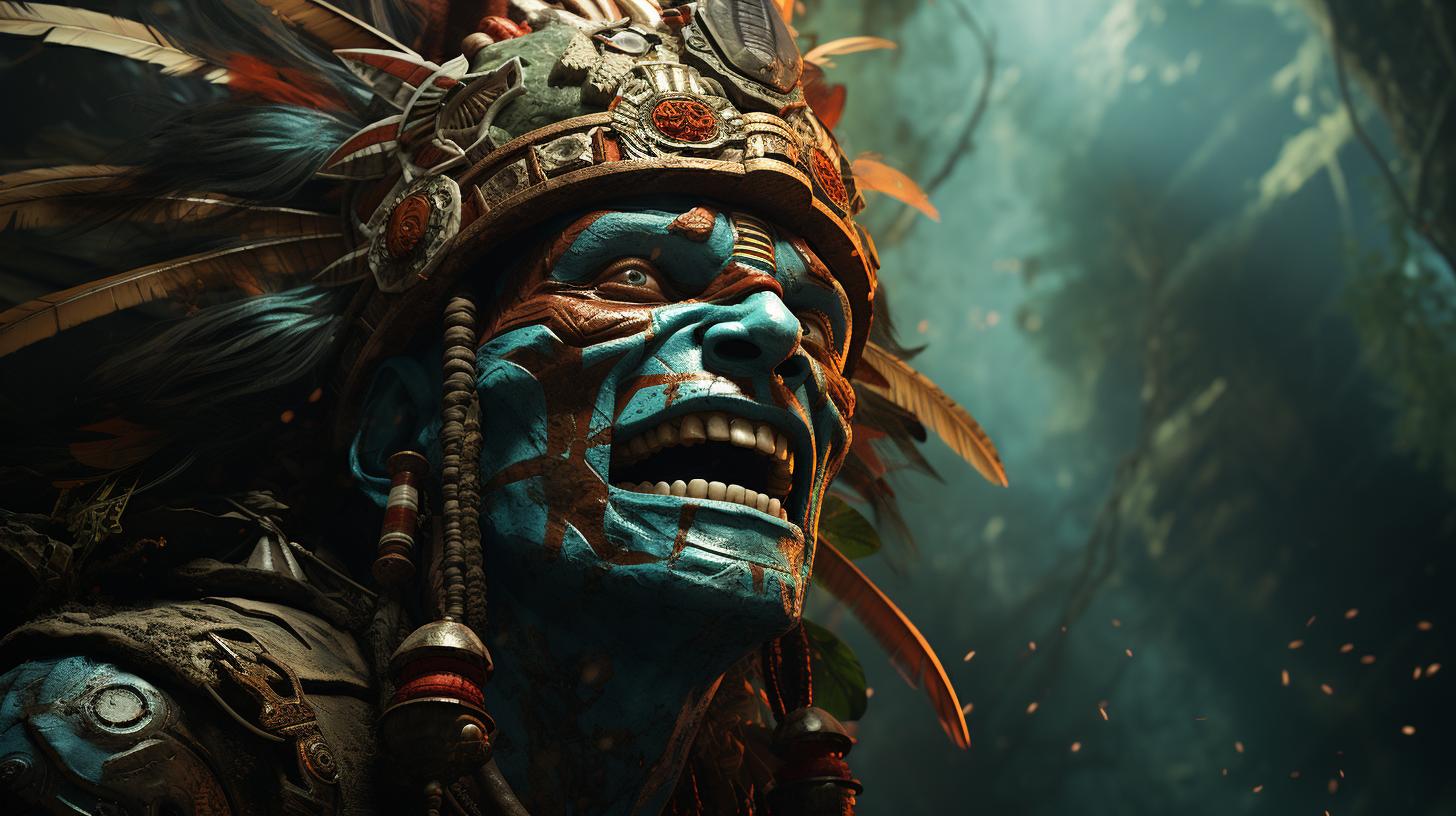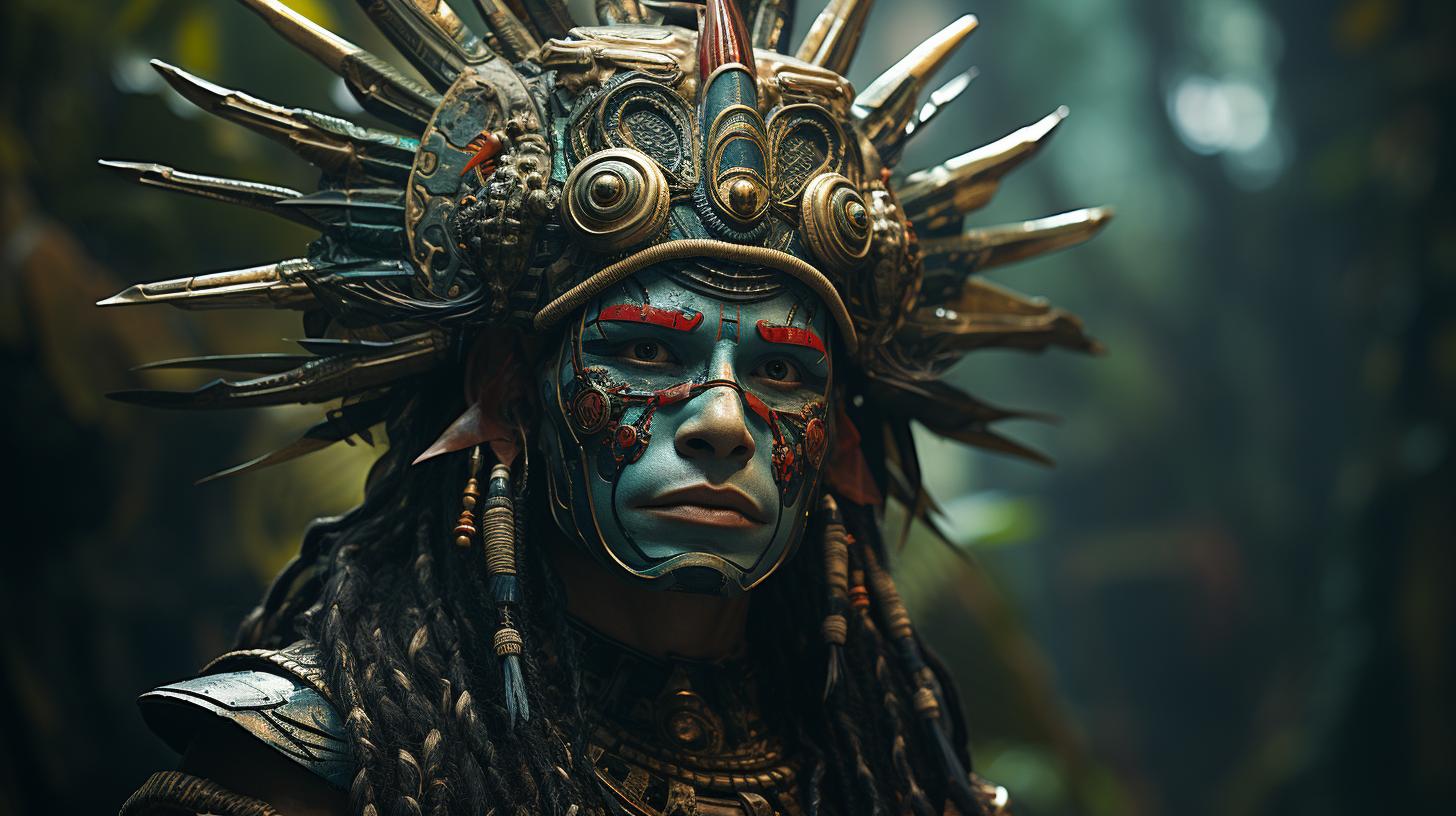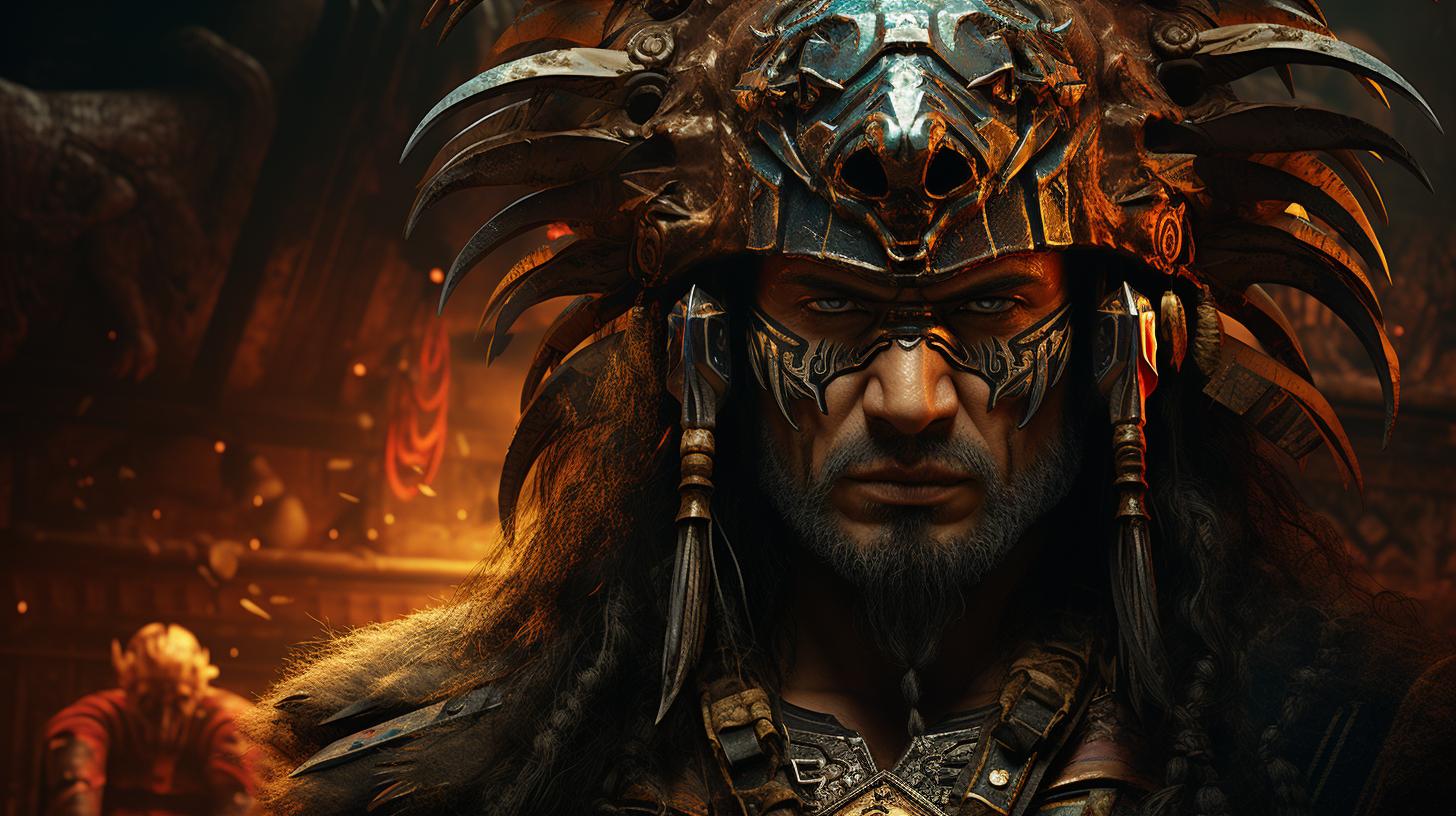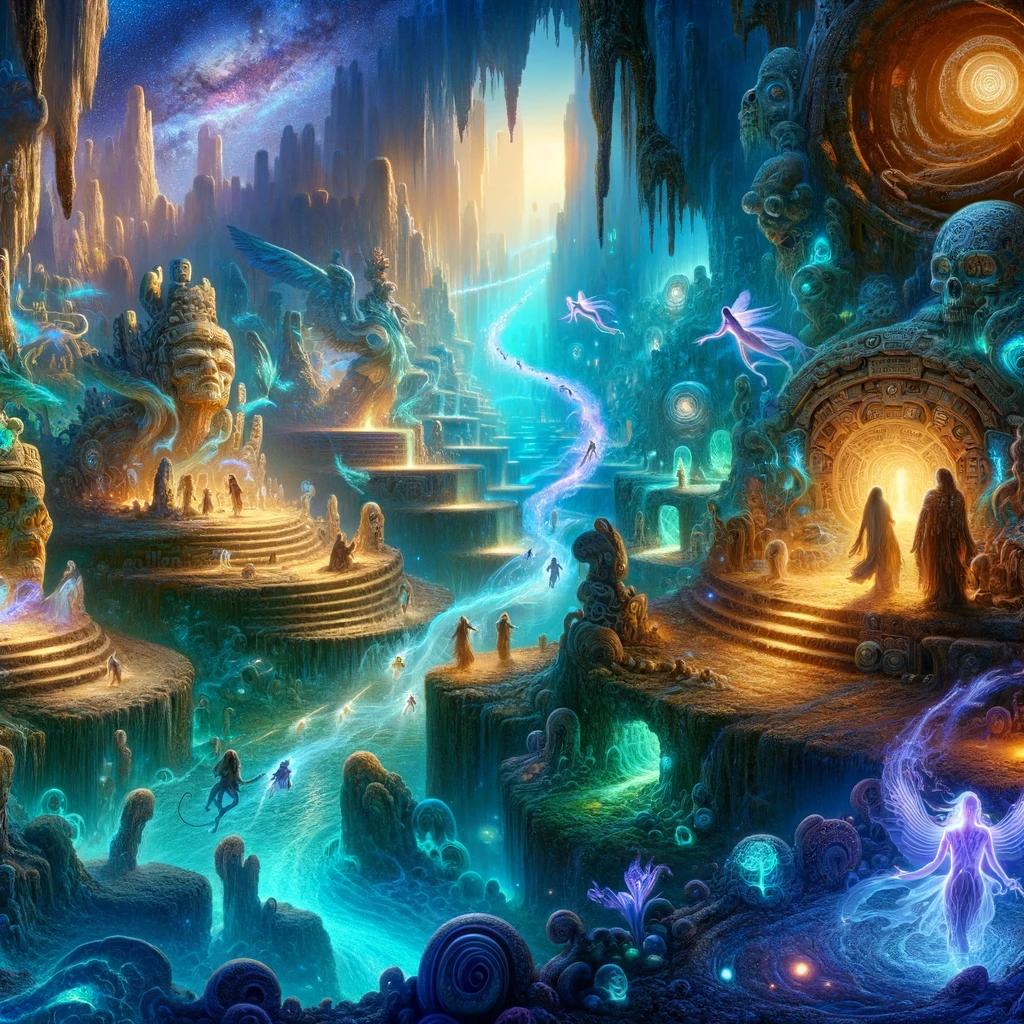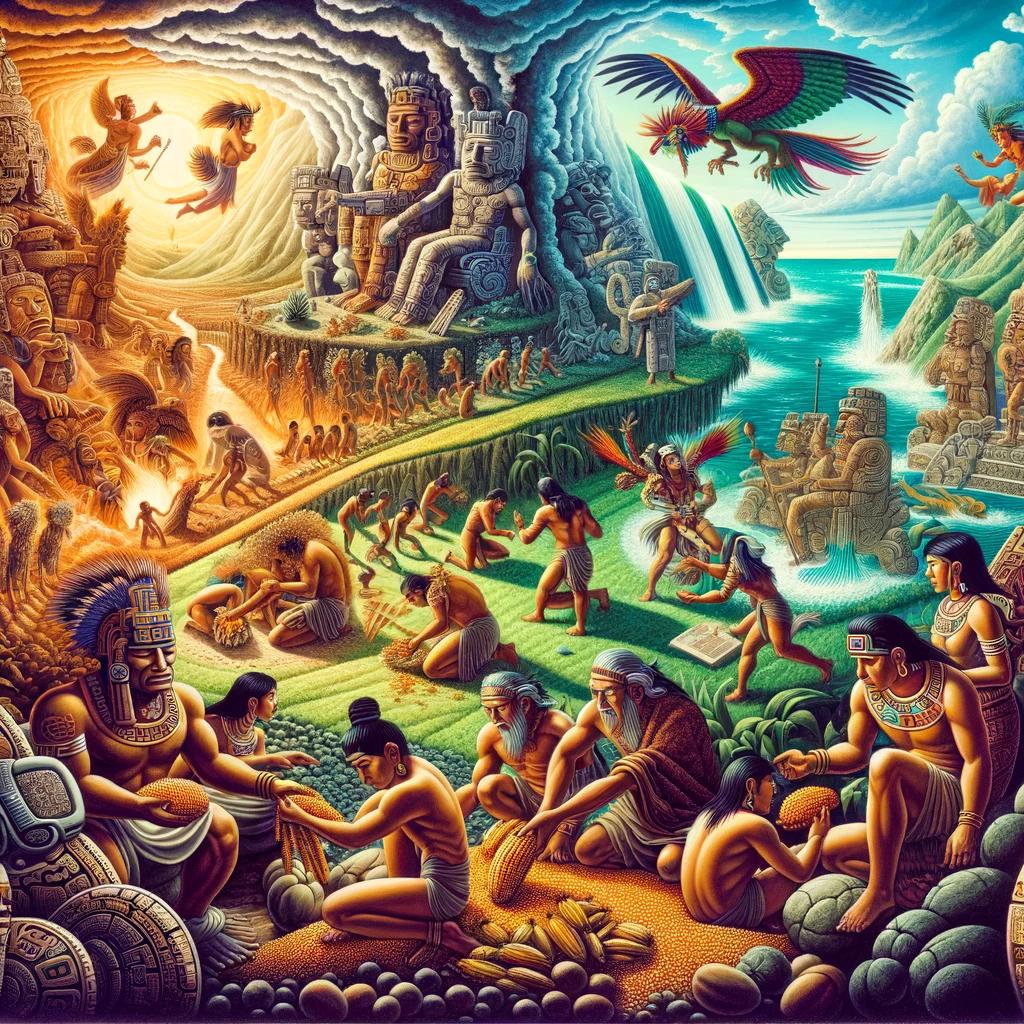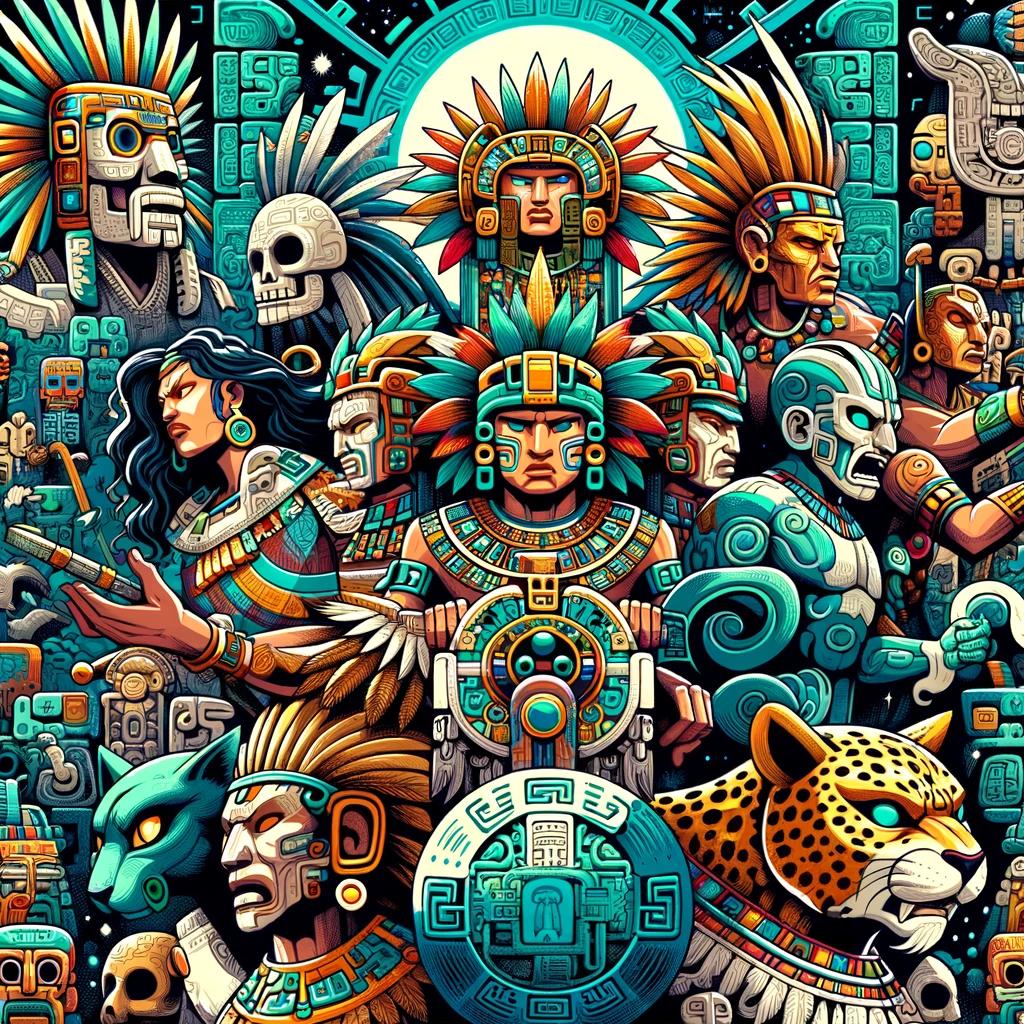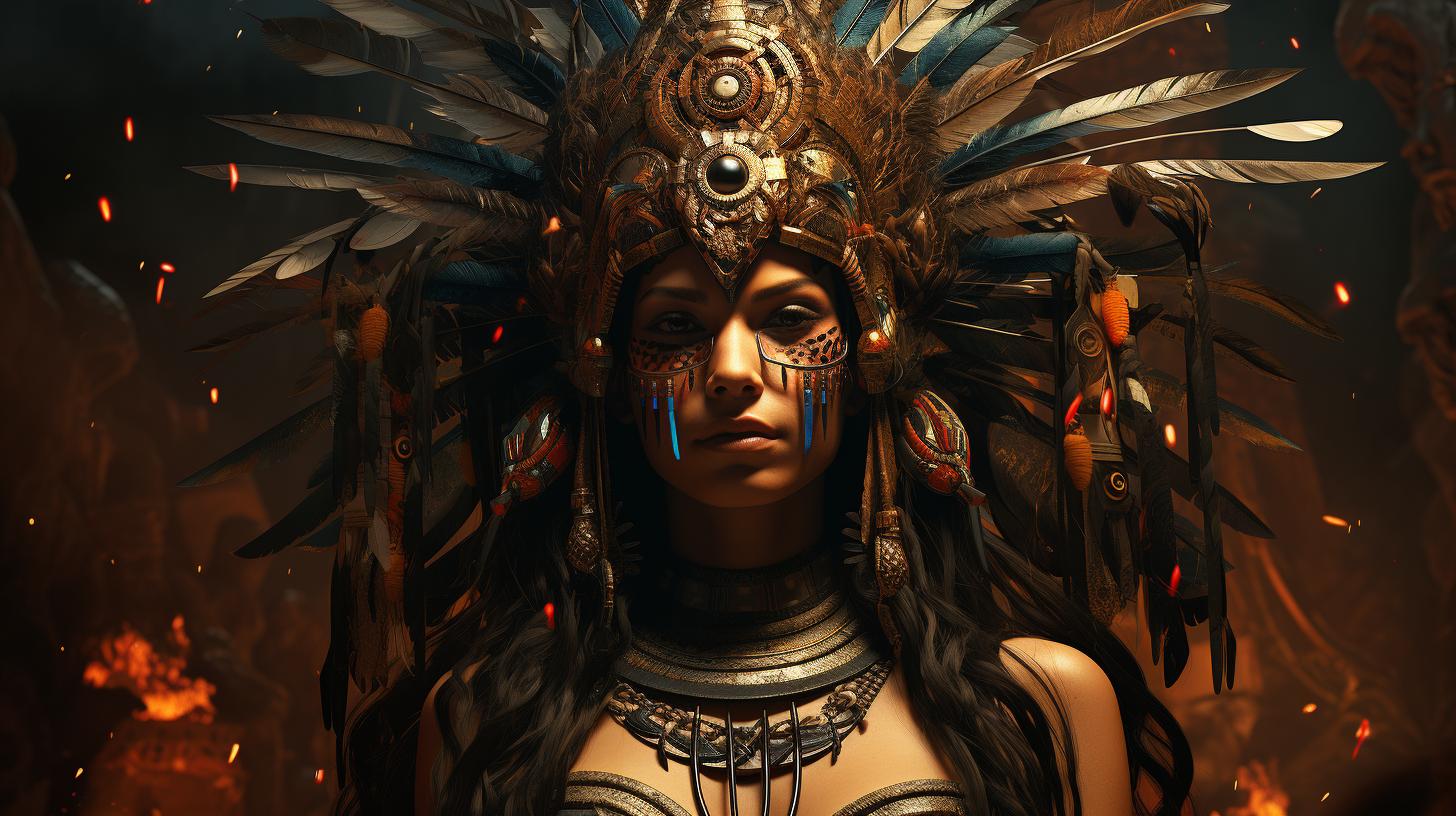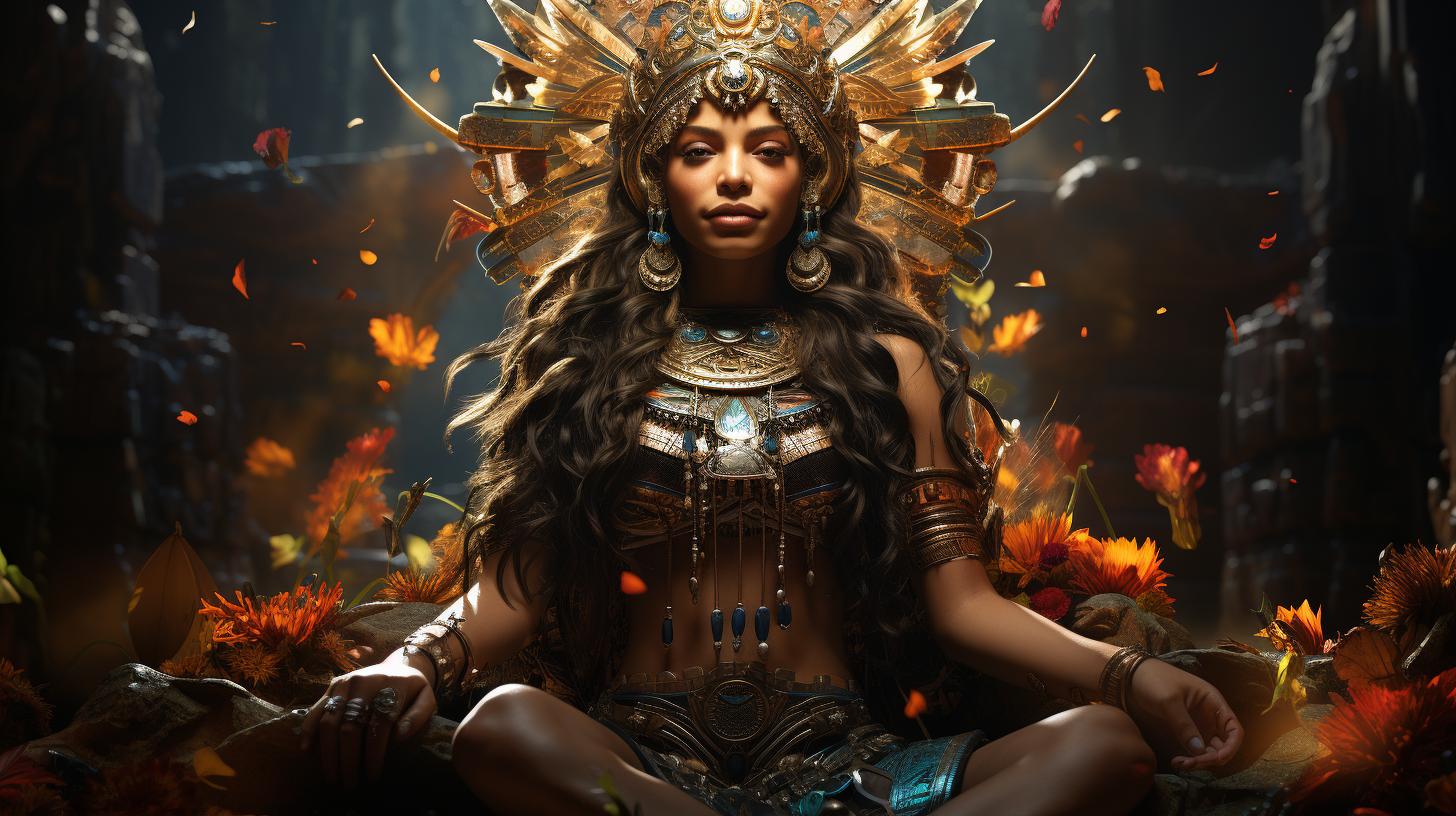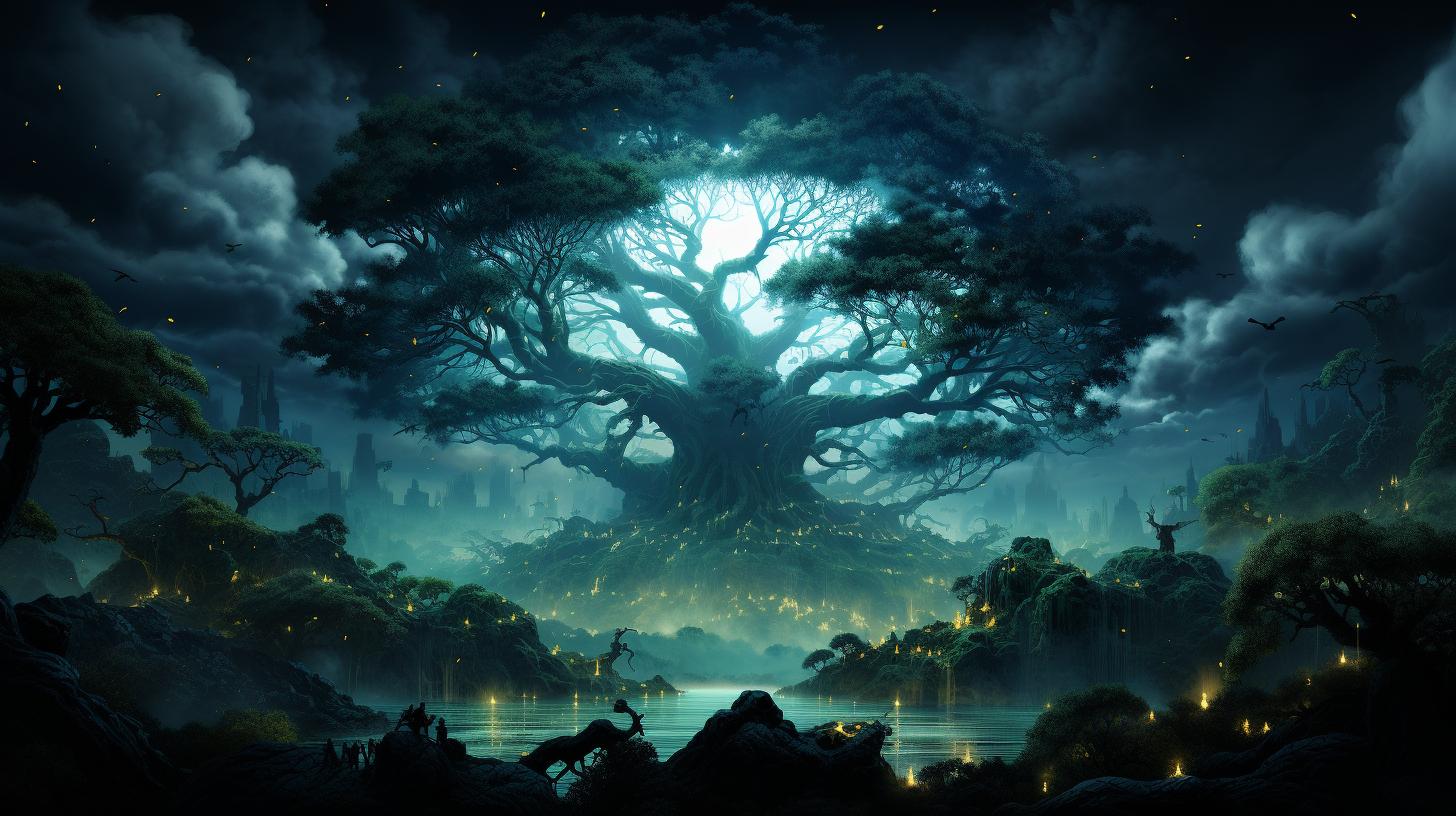Kisin Mayan God: Unveiling the Dark Deity of the Mayan World
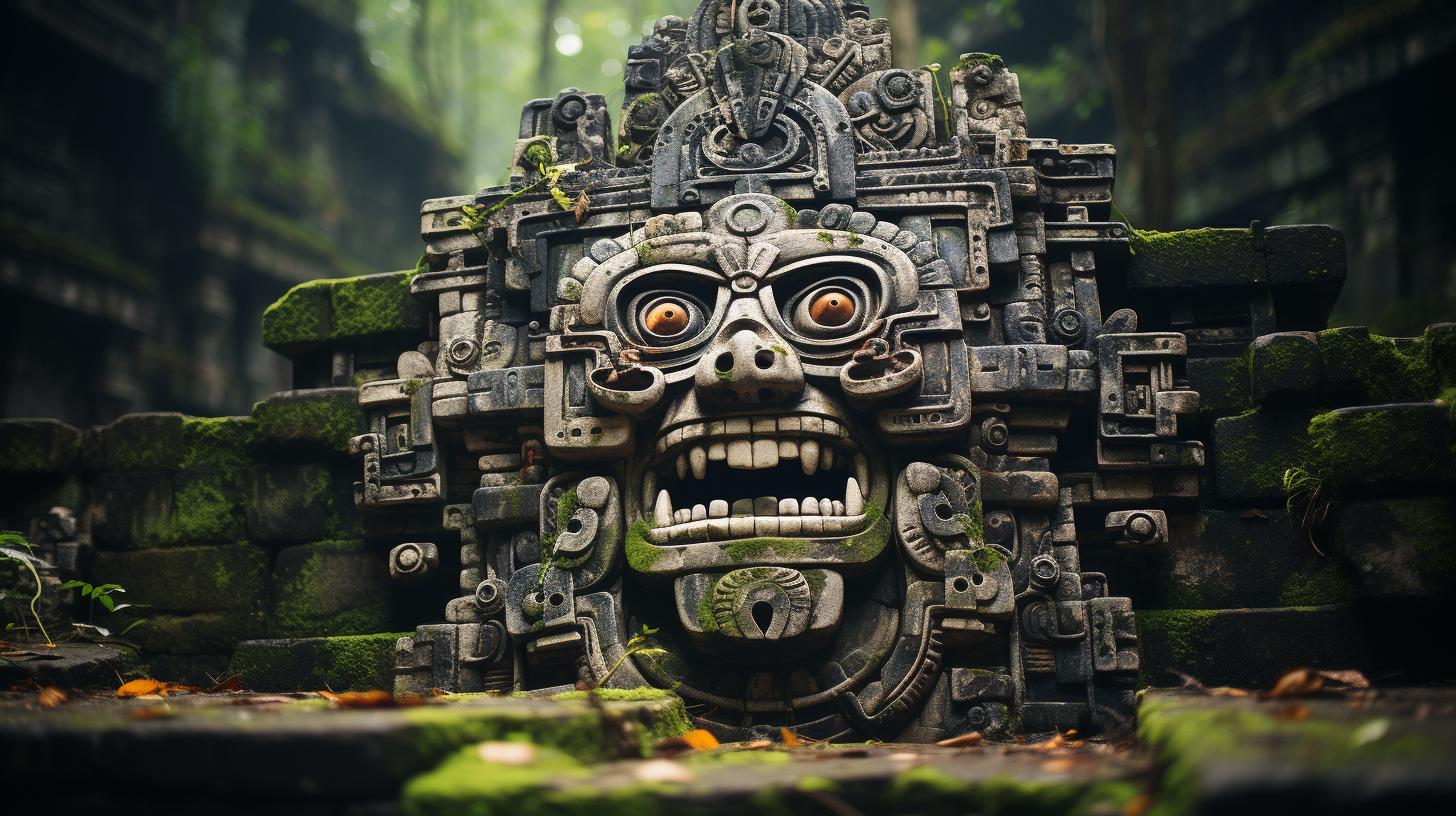
Kisin Mayan god is an intriguing deity in Mayan mythology associated with death and earthquakes. This powerful god holds a dualistic nature and plays a significant role in the religious beliefs of the ancient Maya.
Depictions of Kisin can be found in various forms of art and cultural references. Symbols and iconography connected to Kisin reveal fascinating aspects of this deity. Moreover, Kisin’s presence can be seen in popular culture, including movies and video games.
Get ready to explore the captivating world of Kisin Mayan god.
Overview of Kisin Mayan God
Welcome to the fascinating world of Kisin, an ancient Mayan god associated with death and earthquakes. Revered in the Mayan civilization, Kisin holds a significant role in their religious beliefs and mythology.
Understanding the essence of Kisin allows us to grasp the intricate layers of Mayan culture and traditions.
Kisin is often depicted as a divine entity with a dualistic nature, representing both the malevolent aspects of the underworld and the transformative power of death.
As the god of death, Kisin holds sway over the subterranean realm of the deceased, ruling with an air of mystery and darkness.
While Kisin is primarily associated with death and its somber implications, this deity also holds sway over other aspects of Mayan life.
In certain representations, Kisin takes on the role of the god of the sun and maize, highlighting the interconnectedness between life, death, and the natural world in Mayan cosmology.
The iconography of Kisin is rich and symbolic, illustrating its significance in Mayan art and culture.
Often depicted as a dancing skeleton holding a lit cigarette, Kisin exudes an eerie yet mesmerizing aura. The collar of death adorned with disembodied eyes hanging from its nerves further emphasizes the deity’s association with mortality.
Over time, Kisin’s significance has transgressed the boundaries of ancient Mayan civilization and entered popular culture. The deity has made appearances in various forms of media, including movies, video games, and novels, perpetuating its enigmatic allure in the modern world.
Through this exploration of Kisin, we aim to shed light on the multifaceted nature of this Mayan god and illuminate its role in shaping the beliefs, rituals, and symbols of the ancient Mayan civilization.
Mythology and Origins of Kisin
Exploring the rich mythology surrounding Kisin Mayan god reveals fascinating tales of creation and divine power in Mayan culture. The origins of Kisin can be traced back to ancient times when the Maya believed in the existence of multiple gods with distinct roles and attributes.
In Mayan mythology, Kisin is often associated with death and the underworld. This deity is believed to have dominion over the subterranean realm, where the souls of the deceased reside.
Kisin’s association with death showcases the Mayan belief in the cyclical nature of life, where death and rebirth are integral parts of the cosmic order.
Legends and myths surrounding Kisin depict this god as a malevolent force, capable of causing destruction and chaos.
It is believed that Kisin can bring about earthquakes and natural disasters, further emphasizing their role as a deity of great power and influence.
The origins of Kisin can also be linked to the concept of duality in Mayan religion.
Just like many other Mayan deities, Kisin embodies both benevolent and malevolent aspects, representing the contrasting forces of creation and destruction, life and death.
Throughout the centuries, Kisin maintained a significant presence in Mayan religious rituals and practices.
The influence of this deity can be seen in sacrificial ceremonies, where offerings were made to appease Kisin and ensure balance in the cosmic order. These rituals were believed to maintain harmony between the mortal realm and the divine realm, fostering fertility, abundance, and protection.
Kisin’s role in Mayan mythology and religious practices highlights the intricate and deeply spiritual beliefs held by the ancient Maya. Exploring the mythology and origins of Kisin provides a profound insight into the cosmology and worldview of this fascinating civilization.
Kisin: The Mayan God of Death
In Mayan mythology, Kisin is widely regarded as the powerful god of death. This deity represents the transition from life to the afterlife, holding immense significance in ancient Mayan religious beliefs.
Kisin’s presence looms over the realm of the deceased, ruling the subterranean world of the dead with an iron grip.
According to mythological tales, Kisin possesses a dualistic nature, embodying the dark and malevolent aspects of the Mayan religious pantheon.
As the god of death, Kisin is responsible for guiding and governing the souls of the departed. It is believed that upon a person’s death, Kisin claims their soul and decides their fate in the afterlife.
Role in Mayan Beliefs and Rituals
Kisin’s influence extends beyond the realm of death. In Mayan religious practices, rituals were dedicated to appeasing this formidable deity and ensuring harmonious cosmic balance. The rituals often involved bloodletting, sacrifices, and offerings to honor Kisin and seek his favor.
Furthermore, Kisin’s association with death led to his involvement in various agricultural rituals. The Mayans believed that the cycle of life and death extended to crops and harvests, which were overseen by this powerful god.
Sacrifices and ceremonies were performed to secure abundant harvests and ensure the prosperity of the Mayan civilization.
Depictions of Kisin
Depictions of Kisin in Mayan art and iconography reveal a captivating portrayal of this death god. Often depicted as a skeleton adorned with intricate symbols and ornaments, Kisin’s skeletal form accentuates the transient nature of life and the inevitability of death.
He is often depicted with a crown or headdress, representing his divine status as a deity.
The artistic representations of Kisin often incorporate symbolic elements such as bones, skulls, and serpents, emphasizing his association with death and the underworld.
These visual depictions provide a glimpse into the complex mythology and beliefs surrounding Kisin in Mayan culture.
Legacy and Significance
Kisin’s role as the god of death holds immense importance in Mayan culture and religion. The belief in Kisin’s power to guide the souls of the departed and influence the cosmic order shaped the practices and rituals of the Mayan civilization.
Today, the legacy of Kisin lives on as a fascinating aspect of Mayan mythology, captivating the imaginations of those who delve into the rich cultural heritage of the ancient Maya.
Kisin: The Mayan God of Sun and Maize
Kisin, the Mayan god of sun and maize, holds a vital role in the ancient Mayan pantheon. As a deity connected to agricultural fertility and the sustenance of life, Kisin is revered for his ability to bring forth abundance and ensure the prosperity of crops.
In Mayan mythology, Kisin is often depicted as a youthful and radiant god, symbolizing the warmth and energy of the sun. His association with the sun signifies his power to nurture and ripen the maize, a staple crop that formed the foundation of the Mayan civilization’s sustenance.
The divine attributes of Kisin extend beyond agriculture. He is also believed to possess transformative qualities, capable of embodying the growth and regeneration of nature. This aspect of his character aligns with the cycles of life and death, mirroring the cyclical nature of the sun’s journey across the sky.
Importance in Mayan Rituals and Ceremonies
Kisin’s significance is particularly evident in various Mayan rituals and ceremonies. During agricultural festivals and planting seasons, the Mayan people would offer prayers and sacrifices to invoke Kisin’s benevolence. These rituals sought to ensure favorable weather conditions, abundant harvests, and overall agricultural prosperity.
Additionally, Kisin played a crucial role in initiation ceremonies for young men entering adulthood. These ceremonies emphasized the connection between the natural world and human existence, with Kisin serving as the guiding force behind personal growth and transformation.
Symbols and Depictions
Kisin is commonly portrayed in Mayan art and iconography with symbols representing his association with the sun and maize. He is depicted wearing elaborate headdresses adorned with maize husks and sun rays, symbolizing his connection to these vital elements of life and sustenance.
Furthermore, Kisin is often shown holding maize cobs or stalks, representing his role in ensuring bountiful agricultural yields. His youthful appearance, radiant smile, and vibrant attire reinforce his representation as a benevolent deity associated with growth and vitality.
Legacy and Worship
While the worship of Kisin ceased with the decline of the ancient Mayan civilization, the reverence for his role in sustaining life and the agricultural cycle has left an enduring legacy.
His influence permeated the daily lives of the Mayan people, shaping their beliefs and rituals surrounding fertility, growth, and prosperity.
Today, Kisin continues to inspire fascination and intrigue, captivating the attention of scholars, historians, and enthusiasts interested in the rich tapestry of Mayan mythology and culture.
Depictions of Kisin in Mayan Art and Culture
The depictions of Kisin in Mayan art and culture provide fascinating insights into the beliefs and perceptions surrounding this powerful deity. The ancient Maya used various artistic mediums to represent Kisin, showcasing different aspects of this enigmatic god.
In Mayan art, Kisin is often depicted as a skeletal figure, symbolizing death and the underworld. The skeletal form, sometimes depicted as a dancing skeleton, represents the transient nature of life and the inevitability of death.
The skeletal imagery is accompanied by other symbolic elements, such as a lit cigarette and a death necklace adorned with disembodied eyes, further emphasizing Kisin’s association with death.
Mayan artists also incorporated animal symbolism in their representations of Kisin.
Spiders, centipedes, scorpions, vultures, owls, and bats are commonly depicted alongside Kisin, suggesting their connection to the underworld and the cycle of life and death. These animals serve as powerful visual symbols, signifying the presence and influence of Kisin in the natural world.
- The spider represents creation, as it weaves its web and snatches prey, embodying the transformative power of Kisin.
- The centipede signifies the connection between the earth and the underworld, linking Kisin with the realm of the dead.
- The scorpion symbolizes danger and mortality, underscoring Kisin’s association with death and the potential for destruction.
- The vulture, known for scavenging corpses, is a potent representation of death and decay, aligning with Kisin’s dominion over the deceased.
- The owl, often associated with nocturnal activities and wisdom, represents the spirit realm, reinforcing Kisin’s role as a bridge between the living and the dead.
- The bat, a creature of the night, symbolizes rebirth and transformation, echoing Kisin’s association with the cyclical nature of life and death.
Another significant visual element associated with Kisin is a floating object in the shape of an ‘S’ above its head.
The exact meaning of this symbol remains a subject of debate among scholars, but it is believed to represent the serpent or cosmic energy.
The presence of Kisin in Mayan art not only depicts the god’s characteristics and attributes but also reflects the underlying worldview and religious beliefs of the Maya.
The intricate symbolism and attention to detail in these depictions highlight the significance of Kisin in Mayan culture and the centrality of death in their cosmology.
The Dualistic Nature of Kisin in Mayan Religion
Kisin, the Mayan god of death and earthquakes, possesses a fascinating dualistic nature that reflects the complex beliefs of ancient Mayan religion.
This duality can be observed in various aspects of Kisin’s role and symbolism, shedding light on the intricate worldview of the Mayan people.
One aspect of Kisin’s duality lies in the contrasting realms he governs.
As the ruler of the underground realm of the dead, Kisin embodies the dark and ominous forces associated with death and the afterlife. However, Kisin’s influence is not limited to death alone; he is also intricately connected to the natural world.
It is believed that Kisin has the power to command earthquakes, a destructive force that disrupts the balance of the living world.
Another facet of Kisin’s dual nature can be seen in his representation as a malevolent deity in Mayan mythology.
Often depicted alongside the god of war in scenes of human sacrifice, Kisin symbolizes the malevolent and destructive forces that can be unleashed upon humanity. However, Kisin’s association with sacrifice and war also reveals his role as a keeper of balance.
In Mayan cosmology, sacrifices were essential for maintaining harmony between the human realm and the divine, and Kisin’s presence in such rituals served as a conduit for this equilibrium.
Furthermore, Kisin’s duality is reflected in his transformation after the Spanish conquest of the Mayan civilization.
He merged with the Christian concept of the devil, further emphasizing his contrasting nature as a malevolent force aligned with the underworld.
The dualistic nature of Kisin in Mayan religion encapsulates the intricate interplay of life and death, destruction and creation, that defined the Mayan worldview.
It highlights the cosmic balance that the ancient Mayans sought to maintain, and the role of deities like Kisin in upholding this delicate equilibrium.
Symbols and Iconography Associated with Kisin
Kisin, the Mayan god of death and earthquakes, is rich in symbolism and iconography that offer insights into the Mayan beliefs and rituals. These symbols and depictions provide a glimpse into the significance and attributes associated with Kisin in Mayan culture.
One of the prominent symbols linked to Kisin is the skull, representing death and the underworld. The skull is often depicted alongside Kisin, emphasizing his role as the god of death and ruler of the subterranean realm of the deceased.
Additionally, the skull signifies the transient nature of human existence and serves as a reminder of life’s impermanence.
Another prevalent symbol in the iconography of Kisin is the skeleton, specifically the dancing skeleton.
This lively depiction of a skeleton highlights the dynamic and transformative nature of death, as well as the belief in the cyclical nature of life and rebirth. The dancing skeleton represents the eternal dance between life and death, showcasing the duality ingrained in Mayan religious concepts.
Furthermore, Kisin is often portrayed holding a lit cigarette, symbolizing the connection between death and smoke. The cigarette represents the act of smoking as a conduit for communication between the realms of the living and the dead.
It acts as a portal through which offerings and prayers can reach the underworld, connecting mortals with the spirits and allowing for communication with the realm of the afterlife.
In addition to these symbols, Kisin is associated with various animals in Mayan iconography.
These animals include spiders, centipedes, scorpions, vultures, owls, and bats. Each creature carries its own symbolic significance, contributing to the multifaceted nature of Kisin. For instance, spiders symbolize creation and the weaving of fate, while vultures represent the cycle of death and rebirth.
Kisin’s iconography also includes distinct headgear in the form of a floating ‘S’ shape and a symbol of darkness on the forehead. These headpieces highlight the enigmatic and mysterious nature of the god, emphasizing his connection to the unseen realm of the dead and his role as the harbinger of darkness.
Overall, the symbols and iconography associated with Kisin reflect the complex worldview and beliefs of the ancient Mayan civilization. They provide visual cues to understand and interpret the role of Kisin as the god of death and his significance in Mayan religious practices.
Kisin Mayan God in Popular Culture
Kisin Mayan god has left a lasting impact on popular culture, appearing in various forms of media such as movies, video games, and literature. Here are some notable examples:
- ‘El Camino hacia El Dorado’: This animated film references Xibalba, a Mayan underworld associated with Kisin.
The film showcases the intrigue and mystery surrounding the Mayan pantheon, including their beliefs and deities.
- ‘Smite’ Video Game: Within the popular online multiplayer game ‘Smite,’ Kisin is featured as a playable god named Ah Puch.
Players can embody the dark powers of Kisin and engage in mythological battles with other deities from different cultures.
- ‘El Corredor de Tormentas’: This novel incorporates Kisin, shedding light on the deity’s role in Mayan mythology and its influence on characters’ experiences.
The captivating narrative explores the intersections of ancient beliefs and the modern world.
- ‘9 Clues: El Secreto de Serpent Creek’: This mystery and supernatural-themed game introduces players to the enigmatic world of Kisin.
As they navigate intricate puzzles and uncover hidden secrets, the presence of Kisin adds an element of suspense and intrigue to the storyline.
These various portrayals of Kisin Mayan god in popular culture convey the fascination and enduring appeal of Mayan mythology.
They provide opportunities for audiences to explore the rich history and beliefs of the ancient Maya civilization, showcasing the complex and awe-inspiring nature of Kisin and other Mayan deities. Whether through film, video games, or literature, Kisin continues to captivate and inspire, leaving a lasting impression on those who encounter the deity in these cultural mediums.
Discover the allure and influence of Kisin Mayan god as you delve into these captivating portrayals in popular culture.
Frequently Asked Questions about Kisin Mayan God
Who is Kisin Mayan God?
Kisin Mayan God is a deity revered in Mayan mythology, associated with death and earthquakes. Kisin is believed to rule over the underworld and is considered a manifestation of an evil god from the depths.
With a dualistic nature, Kisin represents the dark and mysterious aspects of the Mayan religion.
What are the various names of Kisin?
Kisin is known by different names in Mayan culture, such as Ah Puch, Xibalba, Yum Cimil, Kisen, Yom Cim, or Yum Kimil. These names reflect the different interpretations and regional variations of the death god in Mayan mythology.
How is Kisin depicted in Mayan mythology?
In Mayan mythology, Kisin is often portrayed as a dancing skeleton holding a lit cigarette. The god wears a death collar with disembodied eyes hanging from its nerves. This skeletal figure symbolizes the power and dominance that Kisin holds over the realm of the dead.
What are the attributes and symbols associated with Kisin?
Kisin is associated with various symbols and attributes in Mayan culture. The god is often depicted alongside animals such as spiders, centipedes, scorpions, vultures, owls, and bats. Additionally, Kisin is represented with a floating ‘S’ shaped object over its head and a ‘darkness’ emblem on its forehead.
What was the role of Kisin in Mayan rituals and sacrifices?
Kisin played a significant role in Mayan rituals and sacrifices. The god was invoked during New Year’s rites, where men would walk over hot coals. Temple priests would disguise themselves as Kisin and perform bloodletting rituals and human sacrifices to appease the god.
Are there any surviving temples or artifacts dedicated to Kisin?
While many Mayan temples and artifacts have been lost over time, some archaeological sites still contain remnants and depictions related to Kisin. These include mural paintings and carvings that depict scenes of sacrifices and rituals associated with the god.
How does Kisin compare to other death gods in Mayan mythology?
Kisin holds a prominent place among other death gods in Mayan mythology. While there are other deities associated with death, Kisin is often considered the most important death god in Mayan culture.
The god’s association with the underworld and its role in the afterlife sets it apart from other death gods in the Mayan pantheon.
How has Kisin been portrayed in modern media?
Kisin’s presence has transcended ancient mythology and found its way into modern media.
The god has been referenced in movies such as ‘El Dorado,’ where the character Xibalba is inspired by Kisin. Additionally, in the video game ‘Smite,’ players can embody Kisin as the playable god Ah Puch.
Kisin has also made appearances in novels and supernatural mystery games, capturing the imagination of contemporary audiences.
.











